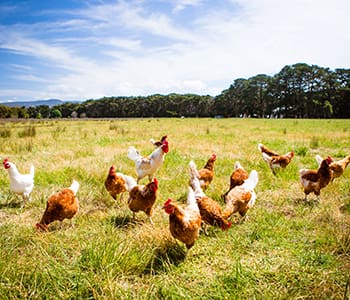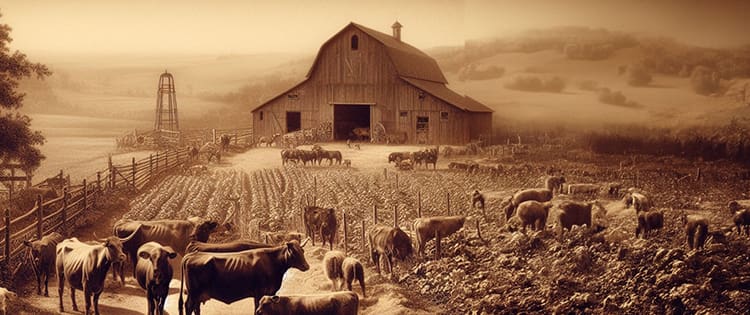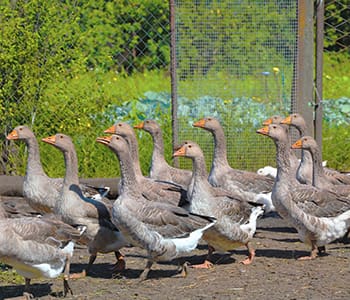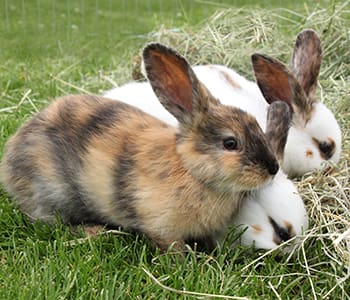When you take a look at the economy today, you certainly pause. Things cost more than they once did by a measure that we wouldn’t have believed a few years ago. Many people are trying to raise their own livestock and planting gardens than they ever have before simply because they don’t want to pay the prices at the grocery store.
In fact, if you look at the initial outbreak of COVID-19, most people bought seeds to plant for the first time in an entire generation. Families looked into methods on how to process their own chickens and other small animals, ones they could grow even in apartments because when a mess hits the wall, we go back to our roots.
Today, we’ll be looking at how our grandparents survived the Great Depression and what livestock you may want to consider when the coin lands the wrong side up. Let’s get started.
A Chicken In Every Pot, Or Not
When you look at grocery store chickens today, they resemble nothing of the 1920s or 1930s chicken. Our fat-breasted, rounded birds of today simply did not exist. The Cornish Cross was not common in the trade until much later in the century. Plus, there’s also one simple fact: Chicken was not enjoyed as a meal anywhere near as commonly as it is today. Chickens, during this time, primarily made eggs.
Now, eggs? Eggs would get you a pair of shoes if you hustled them to your neighbors. They may help you pay the electric bill and you needed very little land to work a few dozen chickens. Train the hens to the poultry shed at night (usually a worn-down shed that nobody had the time to fix and was relatively predator-proofed) and to lay, have a rooster or two, and sell the eggs your family didn’t eat.
The idea of a chicken in every pot was so exceptional because it meant you weren’t living off the birds laying, but from their meat; a fancy thought to those stuck in the Great Depression.
What Other Poultry Was Popular
Geese, ducks, and game fowl were extremely popular in the kitchen. Typically, the geese did the weeding of the farm throughout the growing season. You sold their eggs or kept a few back to let mothers hatch the next generation.
Then, you would call the extra male ducks and geese you had so you didn’t have to try to feed them over the winter. This is why you also see so many goose and duck meals around the winter holidays and festivals during this era. These were also an excellent choice over chickens if your land was more marshy or if you lived on the water. Keeping in mind, of course, that people often free-ranged their animals as opposed to how we raise them today.
Again, the fattened bird wasn’t so much a hallmark as it was not wasting the meat of the excess male animals. In truth, if you had more than you could keep your neighbors weren’t interested and no one had the money to buy any from you (and there were no trades offered), you may even slaughter a goose and give it to the family dog. Assuming your family still had one.
Food, Not Pets
No, no, not the family dog. Or the street cat. Though, honestly, those instances may have occurred when times got extremely lean. We’re talking about rabbits. The meat rabbit has been popular throughout time forgotten, though most often in France. They were much more popular until the 1960s and 1970s in America, at which time family farms began dying off en masse and the rabbit market tanked for the uprising of the Cornish Cross chicken (and its predecessors). The meat was easier to pick from the bones and the fur trade was no longer as popular as it had been.
However, when most of your heat is via coal or wood and you must labor to remain warm during the winter, you come to appreciate rabbit fur-lined gloves, hoods on your jackets, and in your boots. Most meat rabbits both today and back then were bred for an exceptional fur coat worthy of being worn after the rabbit has been dispatched and consumed.
These, of course, you can raise in the apartment. Even a studio. You need only a half-dozen cages of appropriate size and a few months of feed, though our grandparents more often raised them in “tractors”, large movable cages that rotated throughout the yard. The animals grazed safely and soundly, got fat on grass and very little grain, and were butchered between 8 and 15 weeks of age, usually around the time that they became fat enough for the frying pan or the roasting oven.
Rabbit today, at least in the US, is a weak industry but it is starting to revive as more people move to homesteads and want an easy “first-time” processing gig.
Pork, Beef, Mutton, Goat, And The Problem With Hoofstock
Hoofstock takes up a lot of room if you aren’t going to be able to buy hay for it. While people had some room, many did not. The preferred meat of the time was from these animals; people wanted hoofstock meat as opposed to poultry and rabbit when they could get it.
They often could not.
If you had a farm passed down from your grandparents, you were probably selling whatever male extra livestock that you had to the processor who then charged a simply enormous fee compared to what they paid. You may have also leased that land to crop farmers instead, living from the money rather than waiting to grow our livestock.
Though this meat was around, the Great Depression is certainly part of what gave way to the rise of the other meats listed above.
Of the animals listed, which ones would you be interested in learning more about? Tell us in the comments down below! We look forward to hearing from you.
You may also like:
What The Amish Ate During The Great Depression
How to Butcher Game and Livestock (Video)
1800s Pioneer Items You Should Still Have At Home










